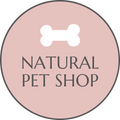
The Benefits of Raw Feeding
In recent years raw feeding has become a huge topic for dog owners everywhere. Opinion is divided, with many vets warning owners of potential health risks, but a huge number of people reporting the wealth of positive impacts that switching to raw has had on their dogs.
Raw feeding is exactly what is sounds like- giving your dog raw meat to eat! However, it’s not that simple. Proper raw feeding needs a careful balance of meat, offal, vegetables, vitamin and mineral supplements. Giving your dog raw mince is not enough, it is not nutritionally complete.
Now we know what raw feeding really entails, it’s time to compare it to ‘normal’ dog food! Now dog food hasn’t been around all that long. It’s only been available in the dry biscuit form that we think of for the last 60 years (Purina Dog Chow). Which means that the concept of ‘dog food’ itself is really modern! Prior to this, dogs were just fed table scraps and human food. Given that the concept of dog food is so new, it’s easy to see why people are beginning to question the validity of this feeding method over a more common sense, fresher approach.

Raw food is mainly promoted due to its wealth of health benefits. The first of these that we want to think about is the impact of bone in raw food. Now raw bone can either be given as a whole bone (usually a large marrow!) or ground into a complete raw pet food. The nutritional benefits of bone come from the calcium, phosphorus, glucosamine, chondroitin, and collagen (Stockman et al., 2021). Together these components do wonders for joint support and bone health. This is hugely beneficial for growing puppies, and also ageing canines! As well as this, bones are fantastic for helping dogs clean their teeth! Personally, I like to use raw turkey necks for this (and the dogs love them).
Another huge benefit we need to consider is immune support. Fresh, balanced nutrition is key to providing the body with the support it needs to fight off infection. Raw meat provides a highly digestible protein source in its most natural form. Within this meat are all the essential amino acids, fats, vitamins and minerals. Whilst these are also present in dry/ tinned/ cooked food, the amount of nutrients is usually diminished in the cooking process. Moreover, we see a healthier gut microbiome in raw fed dogs which is so so key to healthy digestion and a serotonin filled brain (Butowski, C. F., et al., 2022)!

Another key difference between conventional pet foods and raw food is the carbohydrate content. Dry foods contain a lot of hard to digest carbohydrates, sugars, bulkers, or derivatives. This means that a lot of undigested material comes out of the other end… Yes we’re talking about poop! Ask any raw feeder, raw fed dogs have much smaller, firmer, and easier to scoop poop. This in turn means that more of we are putting inside our dogs with raw food is actually being absorbed and utilised by the body!
Now there’s not a lot of research on raw feedings impact on behaviour yet (I hope to see more soon!), but I can tell you about what my clients have reported to me anecdotally. They’re seeing:
- Less hyperactivity
- Less farting
- Easing of allergies / skin problems
- Increased vigour in older dogs
- Dogs have more enthusiasm for the food
- More satiated animals
As you can tell, I’m quite the fan of raw feeding, but it’s always important to present both sides of the story, so let’s move onto the cons!
The biggest reason that vets and pet food manufacturers don’t like raw food is due to the risk of bacterial contamination. We’re talking salmonella (Finley, Rita, et al., 2007). In much the same way that humans shouldn’t eat raw meat, we also need to be careful in handling raw dog food (Nemser, Sarah M., et al., 2014). This means that regular hand and bowl washing as well as safe and clean disposal of poo is crucial. I would be hesitant to recommend raw feeding in a home where young children were present or anyone with a suppressed immune system for the above reasons. It is possible, and many people do it, but you do have to be far more vigilant.

References:
Laflamme, Dorothy P., et al. "Pet feeding practices of dog and cat owners in the United States and Australia." Journal of the American Veterinary Medical Association 232.5 (2008): 687-694.
Nemser, Sarah M., et al. "Investigation of Listeria, Salmonella, and toxigenic Escherichia coli in various pet foods." Foodborne pathogens and disease 11.9 (2014): 706-709.
Finley, Rita, et al. "The risk of salmonellae shedding by dogs fed Salmonella-contaminated commercial raw food diets." The Canadian Veterinary Journal 48.1 (2007): 69.
Stockman, Jonathan, Cecilia Villaverde, and Ronald Jan Corbee. "Calcium, Phosphorus, and Vitamin D in Dogs and Cats: Beyond the Bones." Veterinary Clinics: Small Animal Practice 51.3 (2021): 623-634.


Leave a comment